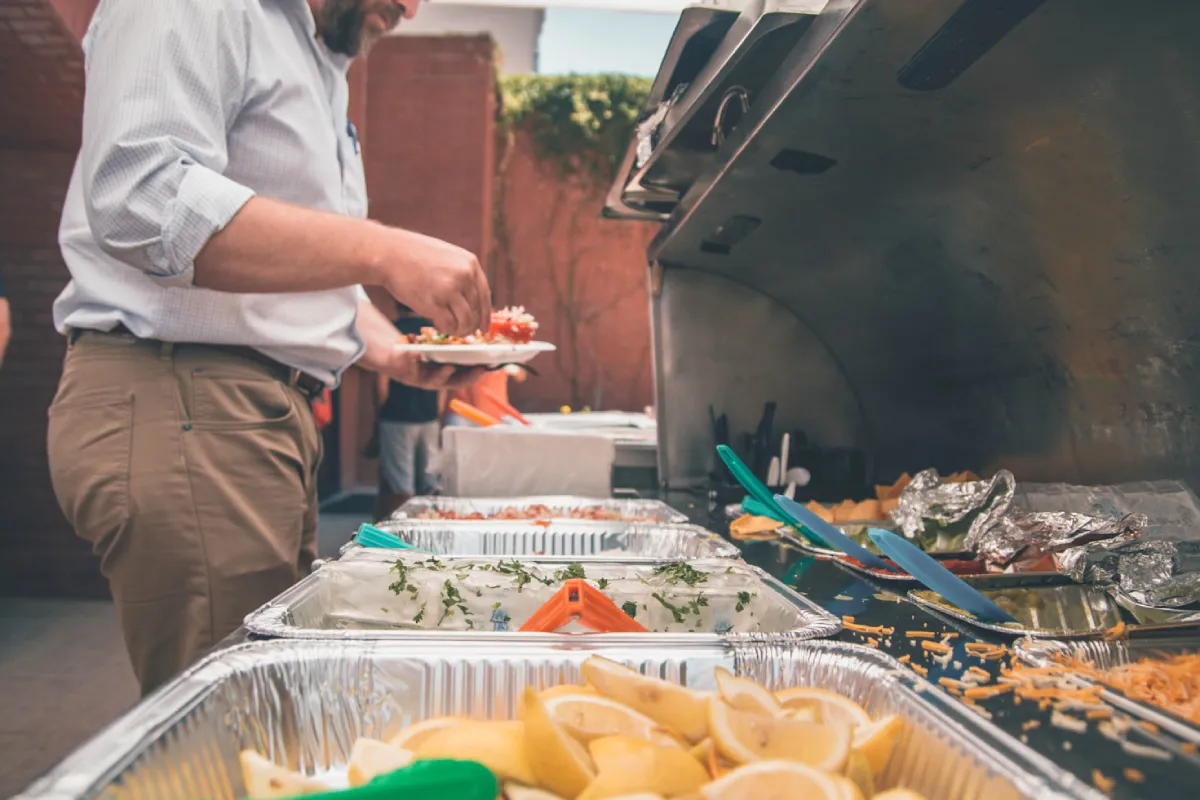Cruise ship buffets are known for their variety and abundance. Guests enjoy a wide selection of meals served in impressive buffet halls. However, behind the cheerful spread lies an important question: how much food goes uneaten? This article explores the facts and figures behind food waste on cruise ships and the efforts taken to lessen the impact.
The Scale of Food on Board
Modern cruise ships, like Royal Caribbean’s Icon of the Sea, are capable of hosting nearly 10,000 guests. Every day, these ships produce enormous quantities of food. Consider these numbers:
- 4,000 lobster tails served daily
- 40,000 desserts prepared every day
These figures show a commitment to variety and guest satisfaction. But even with careful planning, there is an unavoidable surplus of food. Studies have shown that guests often take more than they can finish, and many items sit untouched on the buffet tables.
What Happens to the Extra Food
When food items remain uneaten, cruise ships have set procedures to ensure that the food is not wasted in a harmful way. Here is an explanation of the process:
Measuring and Recording
Buffet staff measure dishes before they are served. After a set period, the remaining food is weighed and recorded. This data helps chefs and management adjust portion sizes for future servings. The goal is to offer just enough to meet guest needs without producing too much surplus.
The Food Processing Chain
The waste that remains is not simply discarded. Instead, cruise ships use a special process called microwave-assisted pyrolysis. In this system, the food scraps are dried and then converted into small pellets. These pellets may look like animal feed, but they serve another purpose on the ship—they can be used to create energy. Although the energy produced (around 200 kilowatts) only powers small sections of the ship—such as the water park—it brings to light creative ways to reduce waste.
How Much Food Waste Are We Talking About?
Food waste on cruise ships is measured in large quantities. For example, Royal Caribbean reported producing over 53,655 cubic meters of food waste in 2022. To help visualize the amount, imagine filling 14 Olympic swimming pools with compressed food scraps. This gives a clear picture of just how much food is wasted.
The strict rules at cruise ship buffets contribute to this amount. Once food is put out for guests, it cannot return to the kitchen. The rules state that any uneaten food must be discarded within four hours, even if it has not been touched. In some cases, there are rumors about ice cream being taken out in large amounts for sudden ice cream parties, which only adds to the waste.
Factors Contributing to High Food Waste
Several reasons cause high levels of food waste on cruise ships:
Overproduction
To please a range of tastes and ensure a positive dining experience, buffet counters are filled with many choices. This encourages guests to try new things but often leads to extra food being left untouched.
Portion Sizes
Despite efforts to measure servings, portion sizes are sometimes too generous. Guests may take too much food out of excitement, only to leave a lot behind.
Strict Buffet Policies
Regulations require that food left out for a specific period must be thrown away to avoid health risks. These rules are important for guest safety but also lead to a large volume of discarded food.
Measures to Reduce Waste
Cruise lines are not ignoring the issue. They have taken steps to lower the amount of waste produced daily. Here are some actions being implemented:
- Improved planning and forecasting of food amounts needed per meal.
- Regular monitoring of food levels to adjust production in real-time.
Shipping companies are learning more about guest preferences and adjusting menus based on consumption data. This data-driven approach allows the staff to be more accurate in their food preparation.
The Future of Food Waste on Cruise Ships
Since 2019, there has been progress in reducing food waste. Royal Caribbean has lowered food waste by 24% over recent years. The company aims for a 50% reduction by 2025. Achieving these goals requires further adjustments in how food is prepared, served, and reused.
Efforts being considered for the future include:
- Further refining portion sizes based on improved data collection.
- Exploring additional ways to recycle or repurpose leftover food.
The process of microwave-assisted pyrolysis is just one example of how cruise ships are rethinking waste management. While the current energy production from food waste is small compared to the ship’s full power needs, every bit of energy counts when it comes to reducing the overall environmental impact.
Guest Awareness and Responsibility
Guests also play a role in reducing food waste. Being conscious about portion sizes can help prevent the overproduction of food. Some cruise lines encourage guests to take smaller servings, with the idea that second helpings are available if needed. Communicating this policy helps reduce waste and aligns with the overall goals of better sustainability.
Understanding how much food is wasted and the steps taken to reduce it brings attention to the need for more sustainable practices in the cruise industry. The balance between guest satisfaction and environmental impact remains a challenge, but progress is being made.
Practical Implications Beyond the Buffet
While the focus here is on when food is served, the implications of food waste stretch further than the buffet area. Food waste management is part of a larger effort to create eco-friendlier operations at sea. Cruise lines continue exploring methods that can reduce waste across various ship operations, not just in dining halls.
For passengers who have suffered injuries or accidents while on a cruise, seeking proper help is important. In such cases, guidance from a professional resource, like a cruise ship injury attorney Galveston, can provide valuable support. This highlights how a focus on safety and care extends beyond addressing food waste alone.
The Cost of Food Waste
Food waste represents a financial loss for cruise operators, not to mention the environmental impact of producing and discarding large amounts of food. The costs include not only the raw ingredients and labor but also the energy and resources used to prepare, store, and dispose of food. Reducing food waste means saving money and protecting the natural environment.
The savings from reducing waste can then be reinvested into better services for guests, more sustainable practices on board, or even new technology to further lower the waste footprint. This positive cycle of improvement might encourage more cruise operators to share ideas and best practices.
Conclusion
Food waste is a big issue on cruise ships, with thousands of cubic meters of food being discarded each year. Even with efforts to adjust food portions and recycle leftovers into fuel, the volume of waste remains significant. Steps taken by companies like Royal Caribbean show that the industry is aware of the problem and is actively working to reduce waste. Guest habits, operational policies, and creative food repurposing methods all play important roles in this challenge.
While the numbers may seem overwhelming, every reduction is a win for both the environment and the costs of running cruise operations. As data collection improves and practices are refined, the cruise industry hopes to see even greater reductions in food waste. For now, the buffet remains a place of delight for guests and a reminder of the ongoing efforts to balance abundance with sustainability.




